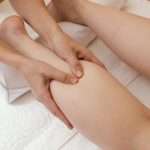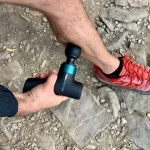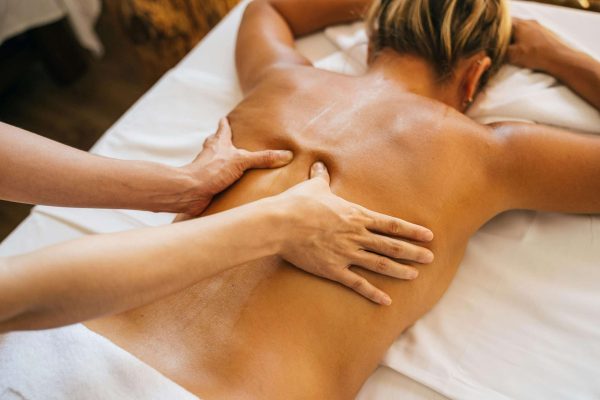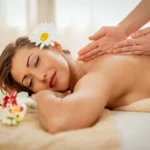Tight calves? Legs aching after a workout or a long shift on your feet?
A self-massage might be just what you need.
You don’t need any fancy tools or spa visits. Just your hands, a bit of oil, and 10 focused minutes. This guide will walk you through everything—how to do it, why it works, and how to make it part of your routine.
Let’s get into it and get those calves feeling refreshed and pain-free! 💪
Table of Contents
Why Your Calves Feel Tight
Your calf muscles are working all the time—whether you’re walking, running, or just standing still. And over time, that constant use adds up.
Here’s what commonly causes calf tightness:
🧍 Being on your feet all day
🏃♀️ Running or intense workouts
👟 Wearing shoes with poor support (like flip-flops or heels)
🛋️ Sitting too long without moving
🧂 Not drinking enough water or getting enough electrolytes
🧠 Stress or poor sleep, which can cause tension in your whole body
Tight calves can make your legs feel heavy, crampy, or even numb. If ignored, they can lead to injuries like Achilles strain, shin splints, or plantar fasciitis.
Why Massaging Your Calves Actually Helps
When your calves are tight, a quick massage can:
🧘 Loosen up stiff, tired muscles
💥 Improve blood flow to help reduce inflammation
🔁 Increase your flexibility and mobility
⚡ Speed up recovery after activity
🛡️ Reduce your risk of injury
🧍 Help with posture and balance
Even 5 minutes can make your legs feel lighter and more awake.
What You’ll Need to Get Started
No need to overthink it. Here’s a simple setup:
🪔 Massage oil or lotion – Coconut, olive, almond, or a light unscented oil works great
🪑 Chair or yoga mat – Somewhere comfortable to sit or lie down
🧼 Towel – To keep your space clean and wipe off extra oil
🦶 Pillow or footstool – To elevate your leg
🎾 Optional massage tools – A tennis ball, foam roller, or massage stick for deeper pressure
Before You Start: Warm It Up
Warming up makes the massage more effective and safer.
Here’s how:
🚶♂️ Take a brisk walk for 5 minutes
🧘♀️ Do a standing calf stretch (push your heel down while leaning into a wall)
🔥 Apply a warm towel or heating pad for a minute or two
🪔 Apply your massage oil to reduce friction
Now your muscles are warm, loose, and ready.
Massage Techniques You Can Use
You don’t need to memorize all these—just try a few and see what feels good.
✋ Effleurage – Long, smooth strokes up your leg using your palm or fingers
🤲 Petrissage – Kneading the muscle, like squeezing dough
🔄 Friction – Small circular pressure with your thumbs on tight spots
🫳 Pinching – Gently grab and lift the muscle, then let it go
👋 Tapotement – Light rhythmic tapping with fingers or cupped hands
🌀 Vibration – Shake or jiggle the muscle gently with your hand
🎯 Trigger point holds – Press on one sore spot and hold for 10–30 seconds
↔️ Cross-fiber rubbing – Rub side to side across the muscle fibers (not just up and down)
Step-by-Step Massage Routine
Let’s put it all together into one simple flow:
1️⃣ Sit comfortably with your foot propped up or leg extended
2️⃣ Apply oil to your hands and calf
3️⃣ Start with effleurage – Light strokes for 1–2 minutes
4️⃣ Move into petrissage – Knead up and down your calf for 2–3 minutes
5️⃣ Target knots – Use friction or trigger point pressure where it feels tight
6️⃣ Add pinching or tapotement to wake up deeper tissue
7️⃣ Finish with effleurage again – Gentle strokes to calm the muscle
8️⃣ Stretch your calf – Hold a light stretch for 20–30 seconds
🕒 This whole sequence takes about 8–10 minutes per leg. You can go shorter or longer based on how you feel.
When and How Often to Massage
The sweet spot? A few times a week.
🗓️ 2–3 sessions a week keeps your calves happy
⚡ Do it more often if you run, lift, or work on your feet
💤 Try it at night to help you wind down
🛑 Skip massage if you have swelling, bruising, or sharp pain
Pro tip: Some people like to massage before a workout to warm up. Others prefer it after to help recover. Try both and see what works best for you.
Focus Areas That Deserve Extra Attention
Some parts of the calf tend to get tighter than others. Don’t just rub randomly—look for these spots:
🎯 Gastrocnemius – The large, visible calf muscle. Feels tight when you walk or run uphill.
🔍 Soleus – Deeper and closer to your heel. Often sore after long standing or cycling.
🔗 Achilles tendon – That thick band just above your heel. Be gentle here.
➡️ Peroneal muscles – On the outer side of your lower leg. Easy to miss, but often tight.
If you find a knot, spend more time there with slow, steady pressure.

Want to Use Tools? Here’s How to Level It Up
Massaging with your hands works great—but sometimes, you want something that can go deeper or do the work for you.

Here are a few tools that can help:
🎾 Tennis ball – Sit down and roll your calf slowly over the ball. Great for targeting one spot at a time.
📏 Massage stick – Hold each end and roll it along your calf with steady pressure. Works well when your hands are tired.
🌀 Foam roller – Use your body weight to roll up and down your calf. Go slow and pause on tight areas.
🔋 Calf massagers – These wrap around your lower legs and use vibration, compression, or rolling pressure to mimic a hands-on massage.
A calf massager is a great option if:
🪑 You want hands-free relief
📈 You like adjusting pressure and settings
📦 You need something easy to use at home or at work
🧘 You’re recovering from workouts or on your feet all day
Some models are compact and portable, while others feel more like a spa experience. Either way, they can take the pressure off—literally.
👉 Check out this guide to the best calf massagers for side-by-side reviews, pros and cons, and which one might be right for you.
Use whatever tool works for your body. The best tool is the one you’ll actually use.
Aftercare: What to Do Once You’re Done
Your muscles just got worked. Treat them kindly.
💧 Drink water to flush out waste
🧊 Use an ice pack if anything feels sore
🛁 Take a warm Epsom salt bath to deepen the effect
🧘 Do a few more calf stretches
🛌 Give your legs a break and rest if you need it
You might feel looser right away—or notice deeper changes after a day or two.
Real-Life Tips to Make It Stick
If you want to actually use this regularly (and not forget after one try), here’s what helps:
📅 Schedule a 10-minute block in your calendar
🧴 Keep massage oil by your bed or yoga mat
🎧 Pair it with a podcast or calming playlist
📈 Track how you feel before/after (tightness, energy, sleep)

FAQs: Quick Answers
Is daily massage too much?
👉 Not at all—just keep it gentle and listen to your body.
Best time to do this?
👉 After a workout or before bed. Or during a Netflix episode.
Can this replace stretching?
👉 It complements stretching but doesn’t replace it. Do both when you can.
What if I feel sharp pain?
👉 Stop immediately. Massage shouldn’t hurt. Soreness = OK. Pain = not OK.
Will this help with foot pain or shin splints?
👉 Yes—tight calves can cause both. Regular massage helps relieve strain across the lower leg and foot.
Final Thought: Keep It Simple. Stay Consistent.
You don’t need a spa. You don’t need to be an expert.
You just need:
🖐 A few minutes
💡 A little knowledge
🔁 A weekly habit
Make self-massage part of your routine and you’ll start noticing the difference—in your movement, your recovery, and how your legs feel at the end of the day.
Try it tonight. Your calves will thank you tomorrow.
📖 Also Read:
👉The Best Calf Massagers: Runner’s Relief for Tight, Tired Legs
👉How to Massage Your Way to Relief from Calf Strain with Massage Techniques
👉How to Massage Away Calf Cramps: Simple Steps for Instant Relief
📚References
🔗How to Massage Your Calf Muscle: A Simple Step-by-Step Guide – Precision Movement
⚠️ Disclaimer:
This article is for informational purposes only and does not constitute medical advice. Always consult with a licensed healthcare provider or certified massage therapist before beginning any new treatment, especially if you have pre-existing health conditions or concerns.












